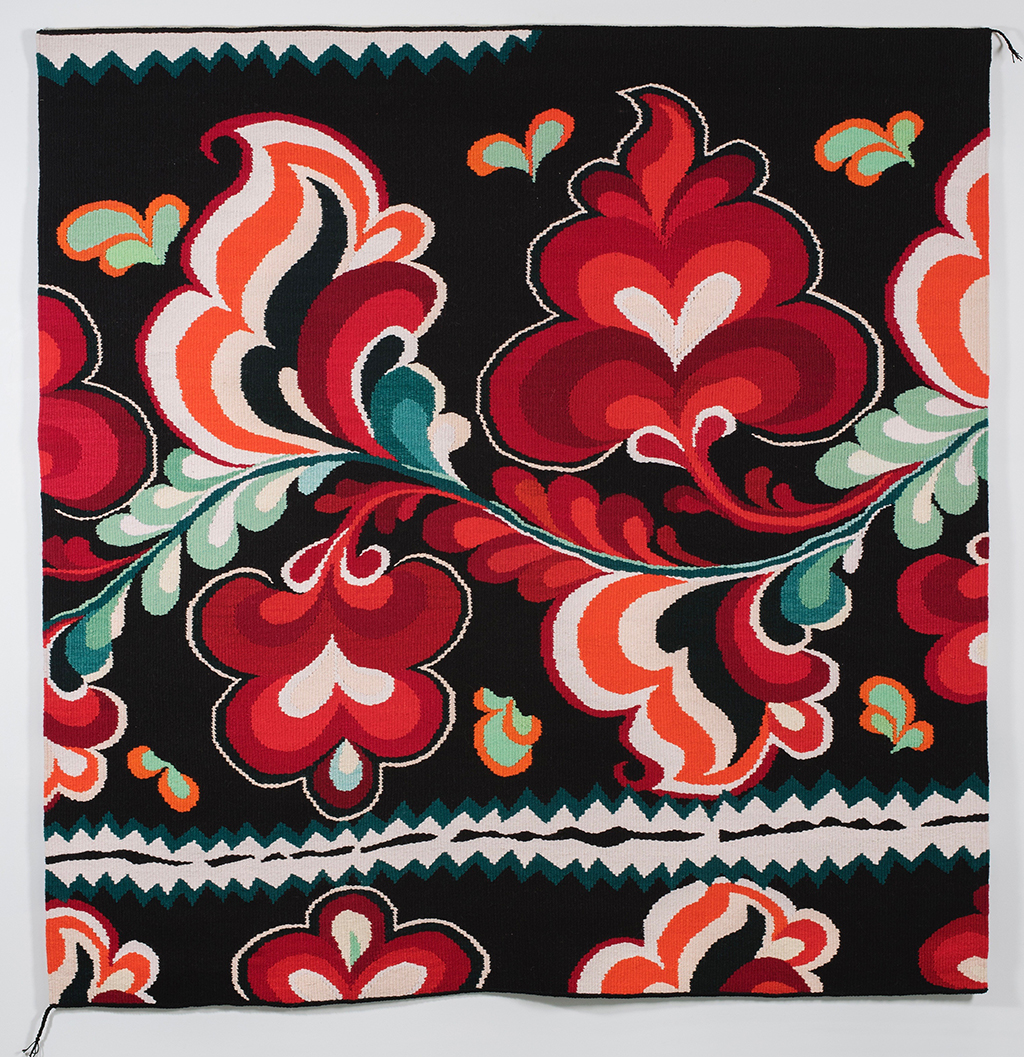
This year’s Cordis Prize is heading to Norway
The winner of world’s biggest prize for tapestry, The Cordis Prize, has been announced.
From a shortlist of 17 artworks by 16 artists will be considered for the £8000 prize the winner selected is Brita Been from Norway whose work Vine wowed the judging panel. Measuring an impressive 250 x 245cm Vine is a joyous statement about heritage and the textile traditions of Norway.
Simple, bold and bright, it is from a pattern traditionally used to decorate a white linen shirt from Brita’s home county of Telemark.
The artwork will be on show alongside the full shortlist as part of the 2019 Cordis Prize Exhibition at Inverleith House Gallery in Edinburgh until 27 May.
Brita said: ‘Telemark, where I live, has strong traditions in different aspects of folk art, and the bunad from here is known to be rich and colorful. Stockings, shirts, braiding, jackets, collars and bunad skirts, are all richly decorated and I have been fascinated by the beautiful rose embroidery in countless variations.
‘The embroidery lavishly decorate the textiles in stunning color combinations. Vine has its origin from an embroidery on a white linen shirt front and is one of the tapestries from the series called Heirloom
‘I have chosen to weave the patterns on a black background. Black boldly highlights colors and makes patterns stand out. The forms are essentially retained as in the original embroideries, even though the patterns have been revised and adapted to transfer from a shirt to large woven tapestries. The patterns are enlarged and made more visible. The tapestries from this series are a tribute to womens´ creative work, their time and patience, and the sheer abundance these embroideries represent in textile folk art. This I would like to emphasize and display on the wall as large woven works.’

Brita Been’s tapestry, VineCordis Prize founder Miranda Harvey said: ‘With such a strong and diverse shortlist it was very hard to pick just one winner. In the end I felt that Vine is powerful, joyous and accessible. It is beautifully woven, deceptively simple, and will delight every visitor to Inverleith House.’
Created to reward ambitious and skilled use of tapestry weaving techniques the prize captures a snapshot of how this classic artform is being developed today. Exploration of colour and materials sit alongside artworks spotlighting social issues such as displacement from war, resistance to ethnic diversity and Western appropriation of Eastern ideals.
The 2019 Cordis Prize Shortlist has been selected by a judging panel convened by co-founder Miranda Harvey and consisting of; Fiona Mathison, former head of Tapestry at Edinburgh College of Art and former Artistic Director at Dovecot Studios, Jo Barker, internationally renowned tapestry artist and winner of the 2017 Cordis Prize, acclaimed fashion and portrait photographer David Eustace, Charlotte Higgins, chief culture writer for The Guardian and Emma Nicolson, Head of Exhibitions at Royal Botanic Gardens Edinburgh.
The Physic Garden Group Tapestry is a collaborative woven tapestry divided into 64 sections, each measuring 6 inches by 4.5 inches to be completed by an individual weaver, under the expert supervision of weaver Jo McDonald. Designed by Natalie Taylor The Physic Garden Group Tapestry will be the largest collaborative woven tapestry piece made in Edinburgh in living memory.
On completion it will be displayed on loan in the Education Centre of the Palace of Holyroodhouse, where it will celebrate the re- creation of the Physic Garden there, to be opened later this year.
See the 2019 Cordis Prize for Tapestry Exhibition at Inverleith House Gallery, Royal Botanic Gardens Edinburgh, on display until 27 May.
Admission is free.
Click HERE for more details.
TAGS

